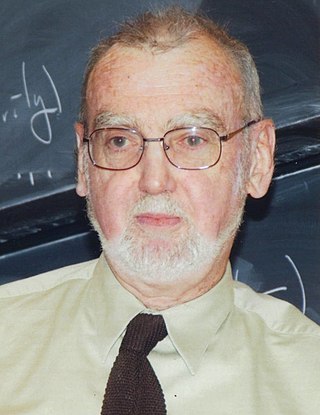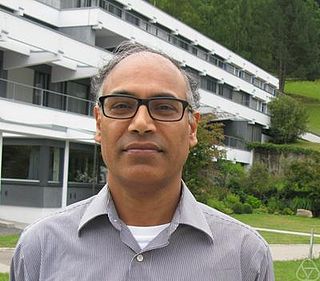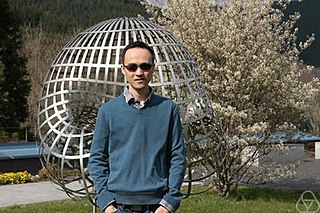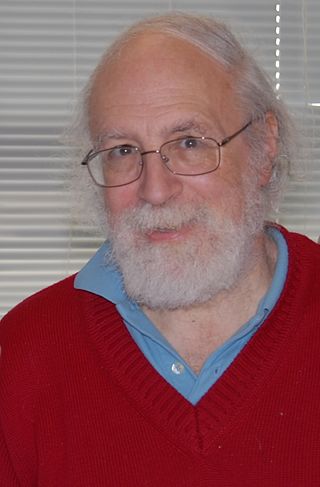Related Research Articles

Atle Selberg was a Norwegian mathematician known for his work in analytic number theory and the theory of automorphic forms, and in particular for bringing them into relation with spectral theory. He was awarded the Fields Medal in 1950 and an honorary Abel Prize in 2002.

Robert Phelan Langlands, is a Canadian mathematician. He is best known as the founder of the Langlands program, a vast web of conjectures and results connecting representation theory and automorphic forms to the study of Galois groups in number theory, for which he received the 2018 Abel Prize. He was an emeritus professor and occupied Albert Einstein's office at the Institute for Advanced Study in Princeton, until 2020 when he retired.

Laurent Lafforgue is a French mathematician. He has made outstanding contributions to Langlands' program in the fields of number theory and analysis, and in particular proved the Langlands conjectures for the automorphism group of a function field. The crucial contribution by Lafforgue to solve this question is the construction of compactifications of certain moduli stacks of shtukas. The proof was the result of more than six years of concentrated efforts.

Harold Scott MacDonald "Donald" Coxeter was a British-Canadian geometer and mathematician.
In mathematics, the Selberg trace formula, introduced by Selberg (1956), is an expression for the character of the unitary representation of a Lie group G on the space L2(Γ\G) of square-integrable functions, where Γ is a cofinite discrete group. The character is given by the trace of certain functions on G.

Peter Clive Sarnak is a South African-born mathematician with dual South-African and American nationalities. Sarnak has been a member of the permanent faculty of the School of Mathematics at the Institute for Advanced Study since 2007. He is also Eugene Higgins Professor of Mathematics at Princeton University since 2002, succeeding Sir Andrew Wiles, and is an editor of the Annals of Mathematics. He is known for his work in analytic number theory. He also sits on the Board of Adjudicators and the selection committee for the Mathematics award, given under the auspices of the Shaw Prize.
In mathematics, the Arthur–Selberg trace formula is a generalization of the Selberg trace formula from the group SL2 to arbitrary reductive groups over global fields, developed by James Arthur in a long series of papers from 1974 to 2003. It describes the character of the representation of G(A) on the discrete part L2
0(G(F)\G(A)) of L2(G(F)\G(A)) in terms of geometric data, where G is a reductive algebraic group defined over a global field F and A is the ring of adeles of F.
In mathematics, the Arthur conjectures are some conjectures about automorphic representations of reductive groups over the adeles and unitary representations of reductive groups over local fields made by James Arthur, motivated by the Arthur–Selberg trace formula.
Audrey Anne Terras is an American mathematician who works primarily in number theory. Her research has focused on quantum chaos and on various types of zeta functions.
Hervé Jacquet is a French American mathematician, working in automorphic forms. He is considered one of the founders of the theory of automorphic representations and their associated L-functions, and his results play a central role in modern number theory.

Edward Vladimirovich Frenkel is a Russian-American mathematician working in representation theory, algebraic geometry, and mathematical physics. He is a professor of mathematics at University of California Berkeley, a member of the American Academy of Arts and Sciences, and author of the bestselling book Love and Math.
Freydoon Shahidi is an Iranian American mathematician who is a Distinguished Professor of Mathematics at Purdue University in the U.S. He is known for a method of automorphic L-functions which is now known as the Langlands–Shahidi method.

Vijaya Kumar Murty is an Indo-Canadian mathematician working primarily in number theory. He is a professor at the University of Toronto and is the Director of the Fields Institute.
Dennis Arnold Hejhal is an American mathematician. In his mathematical research he frequently uses extensive computer calculation.
Robert Edward Kottwitz is an American mathematician.

Stephen Samuel Gelbart is an American-Israeli mathematician who holds the Nicki and J. Ira Harris Professorial Chair in mathematics at the Weizmann Institute of Science in Israel. He was named a fellow of the American Mathematical Society in 2013 "for contributions to the development and dissemination of the Langlands program."

Wei Zhang is a Chinese mathematician specializing in number theory. He is currently a Professor of Mathematics at the Massachusetts Institute of Technology.

Stephen James Rallis was an American mathematician who worked on group representations, automorphic forms, the Siegel–Weil formula, and Langlands L-functions.
Jack A. Thorne is a British mathematician working in number theory and arithmetic aspects of the Langlands Program. He specialises in algebraic number theory.
Vinayak Vatsal is a Canadian mathematician working in number theory and arithmetic geometry.
References
- 1 2 "James Greig Arthur". International Mathematical Union. Archived from the original on August 15, 2011. Retrieved April 25, 2011.
- ↑ "Arthur, James". University of Toronto Department of Mathematics. Retrieved April 21, 2024.
- ↑ "UCC community members join Order of Canada". Upper Canada College. January 17, 2019. Retrieved November 19, 2019.
- ↑ James Arthur at the Mathematics Genealogy Project
- ↑ Institute for Advanced Study: A Community of Scholars Archived January 6, 2013, at the Wayback Machine
- ↑ "Search Fellows". Royal Society of Canada. Archived from the original on January 31, 2019. Retrieved September 7, 2017.
- ↑ "James Arthur". Royal Society . Retrieved April 3, 2018.
- ↑ Arthur, James (1998). "Towards a stable trace formula". Doc. Math. (Bielefeld) Extra Vol. ICM Berlin, 1998, vol. II. pp. 507–517.
- ↑ "Book of Members, 1780–2010: Chapter A" (PDF). American Academy of Arts and Sciences. Retrieved April 25, 2011.
- ↑ "List of Fellows of the American Mathematical Society" . Retrieved November 3, 2012.
- ↑ Canadian Mathematical Society's Second Inaugural Class of Fellows Announced, Canadian Mathematical Society , retrieved January 6, 2020